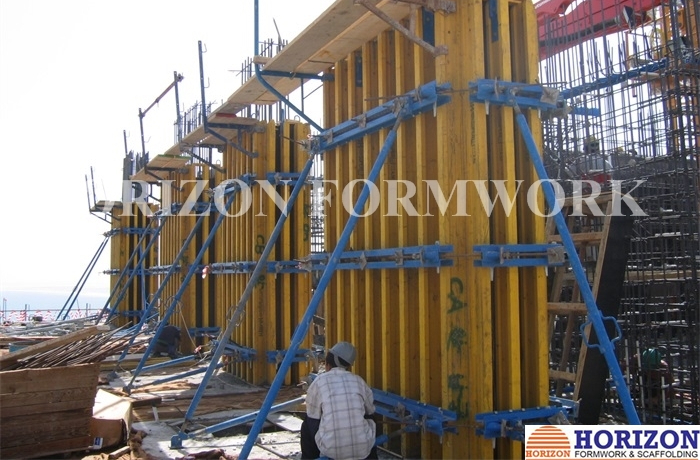dec . 05, 2024 16:53 Back to list
Innovative Self-Climbing Formwork Solutions for Efficient Construction Projects
The Evolution of Self-Climbing Formwork Revolutionizing Construction
In the ever-evolving landscape of the construction industry, efficiency and safety are paramount. One innovation that has garnered attention over the years is self-climbing formwork, a technology that has significantly transformed the way structures are built. Companies specializing in self-climbing formwork are at the forefront of this revolution, providing solutions that enhance productivity while ensuring the safety of workers on-site.
What is Self-Climbing Formwork?
Self-climbing formwork refers to a system that allows formwork to rise vertically along the building structure as it progresses. Unlike traditional formwork systems that require external cranes or scaffolding for elevation, self-climbing formwork uses hydraulic systems to climb the structure, enabling seamless transitions between different levels of construction. This method is particularly advantageous for high-rise buildings, bridges, and other complex structures.
Advantages of Self-Climbing Formwork
1. Increased Safety One of the primary benefits of self-climbing formwork is the increased safety it provides. Traditional formwork systems often require workers to operate at significant heights, exposing them to risks such as falls. Self-climbing formwork reduces the need for scaffolding and minimizes the number of workers operating at height, thereby lowering the likelihood of accidents.
2. Enhanced Efficiency Time is money in the construction industry, and self-climbing formwork offers significant time savings. The automatic climbing mechanism allows for quicker repositioning of the formwork, which means less downtime between cycles. This efficiency translates to faster project completion times, which is a critical factor in today’s competitive market.
3. Better Quality Control Consistency is key in construction, and self-climbing formwork ensures that the structural elements are built to precise specifications. The use of integrated technologies allows for better control over the pouring process, leading to higher quality concrete placements and resulting structures.
4. Cost-Effectiveness While the initial investment in self-climbing formwork may be higher than traditional systems, the long-term savings can be substantial. With reduced labor costs and faster project delivery, the return on investment can be realized quickly, ultimately making it a more financially viable option in the long run.
slef climbing formwork company

Applications of Self-Climbing Formwork
Self-climbing formwork is versatile and applicable across various types of construction projects. High-rise buildings, particularly those in urban environments with limited ground space, benefit immensely from this technology. Additionally, it is used in the construction of bridges, dams, and other infrastructures where height and structural integrity are significant considerations.
Companies specializing in self-climbing formwork also provide customized solutions tailored to the unique requirements of each project. This adaptability presents a significant advantage, allowing construction firms to optimize their operations and meet specific architectural designs efficiently.
The Future of Self-Climbing Formwork
As the construction industry continues to face challenges such as labor shortages and heightened safety regulations, the demand for innovative solutions like self-climbing formwork will only increase. Advances in technology, such as the integration of digital monitoring systems and automation, are expected to further enhance the capabilities of self-climbing systems.
Moreover, sustainability is becoming an increasingly critical consideration in construction. As builders seek to reduce their environmental impact, self-climbing formwork offers an opportunity to do just that. With reduced waste and improved energy efficiency during the construction process, this technology aligns well with the goals of green building practices.
Conclusion
The rise of self-climbing formwork companies represents a significant advancement in construction technology. By enhancing safety, efficiency, and quality control, these companies are helping to shape the future of the industry. As we move forward, the continued evolution of self-climbing formwork will undoubtedly play a crucial role in addressing the modern challenges of construction, paving the way for safer, faster, and more sustainable building practices. In a world that demands more from less, the innovations brought forth by self-climbing formwork are not just welcome; they are essential.
-
Steel Prop with Tripod & Fork Head | Stable Support Solutions
NewsAug.07,2025
-
Premium H20 Timber Beams | Durable Structural Solutions
NewsAug.05,2025
-
Premium Wall Formwork Solutions for Modern Construction
NewsAug.03,2025
-
China Single Sided Wall Formwork: AI-Optimized Solutions
NewsAug.02,2025
-
Premium Timber Beam H20 | Strong & Durable Construction
NewsJul.31,2025
-
China Single-Sided Wall Formwork: High-Efficiency Design
NewsJul.31,2025